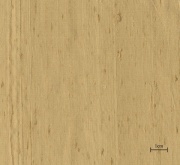Difference between revisions of "Doupion silk"
Jump to navigation
Jump to search
(username removed) |
m (Text replace - "== Authority ==" to "== Sources Checked for Data in Record ==") |
||
| Line 8: | Line 8: | ||
douppioni; dupion; dupioni; doupin; seda salvaje (Esp.); doupionzijde (Ned); | douppioni; dupion; dupioni; doupin; seda salvaje (Esp.); doupionzijde (Ned); | ||
| − | == | + | == Sources Checked for Data in Record == |
* Hoechst Celanese Corporation, ''Dictionary of Fiber & Textile Technology'' (older version called Man-made Fiber and Textile Dictionary, 1965), Hoechst Celanese Corporation, Charlotte NC, 1990 | * Hoechst Celanese Corporation, ''Dictionary of Fiber & Textile Technology'' (older version called Man-made Fiber and Textile Dictionary, 1965), Hoechst Celanese Corporation, Charlotte NC, 1990 | ||
Revision as of 19:52, 30 April 2016
Description
An irregular silk thread produced when threads from two or more cocoons are spun together. The entangled filaments produce a rough yarn with uneven thick and thin areas. Doupion silk is used to make shantung or pongee fabric for suits and dresses.
Synonyms and Related Terms
douppioni; dupion; dupioni; doupin; seda salvaje (Esp.); doupionzijde (Ned);
Sources Checked for Data in Record
- Hoechst Celanese Corporation, Dictionary of Fiber & Textile Technology (older version called Man-made Fiber and Textile Dictionary, 1965), Hoechst Celanese Corporation, Charlotte NC, 1990
- Rosalie Rosso King, Textile Identification, Conservation, and Preservation, Noyes Publications, Park Ridge, NJ, 1985
- Random House, Webster's Encyclopedic Unabridged Dictionary of the English Language, Grammercy Book, New York, 1997
- Website address 1 Comment: www.fabrics.net
